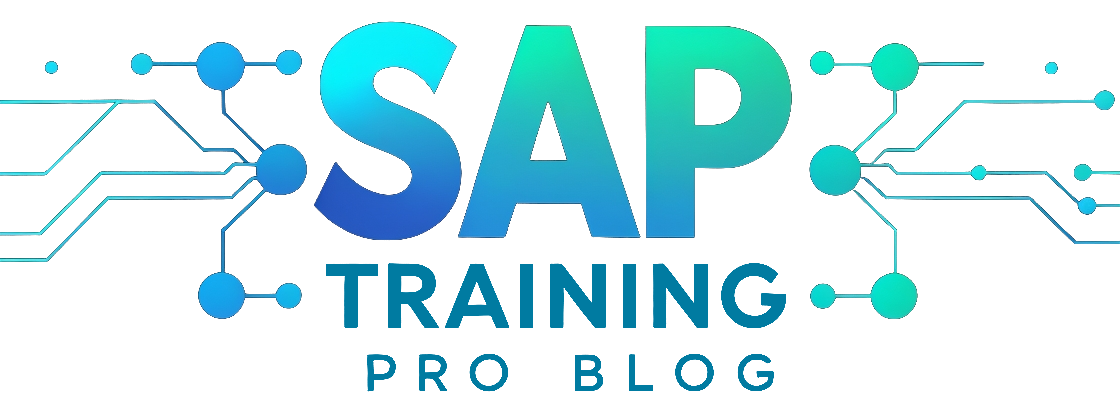Tools to Simplify and Streamline Your SAP Implementation

Implementing SAP software can be a complex and time-consuming process. However, with the right tools, you can simplify and streamline the implementation process, ensuring a smooth transition and maximizing the benefits of SAP software. In this article, we will explore various tools that can help you achieve this goal.
Table Of Content
Project management tools are essential for planning, organizing, and tracking the progress of your SAP implementation project. These tools enable efficient resource allocation, timely delivery, and effective communication among team members. By using project management tools, you can stay on top of tasks, deadlines, and milestones, ensuring that your implementation project stays on track.
Data migration is another critical aspect of SAP implementation. Data migration tools automate the process of transferring data from legacy systems to SAP, reducing manual effort and minimizing errors. These tools ensure that your data is accurately and securely transferred, allowing for a seamless transition to SAP software.
Testing is crucial to ensure the smooth functioning of SAP software. Testing tools automate testing processes, allowing for comprehensive testing and faster identification and resolution of issues. With these tools, you can ensure that your SAP software is bug-free and meets your business requirements.
Workflow automation tools streamline and optimize business processes within SAP, reducing manual intervention and improving efficiency and productivity. These tools automate repetitive tasks, eliminate bottlenecks, and ensure that your business processes run smoothly.
Integration tools facilitate the seamless integration of SAP with other systems, enabling data synchronization and smooth communication between different applications. These tools ensure that your SAP software can seamlessly interact with other systems, maximizing the value of your investment.
Reporting and analytics tools provide insights into the performance and usage of SAP software, enabling businesses to make data-driven decisions and optimize their operations. These tools allow you to monitor key metrics, identify trends, and uncover opportunities for improvement.
User training is essential for the successful adoption of SAP software. User training tools provide interactive and intuitive training materials, making it easier for users to learn and utilize SAP effectively. These tools ensure that your employees are equipped with the necessary skills to fully leverage the capabilities of SAP software.
Change management tools help organizations manage the transition to SAP software by facilitating communication, training, and addressing resistance to change. These tools ensure that your employees are well-prepared for the changes brought by SAP implementation and are supported throughout the transition process.
Securing SAP systems is crucial to protect sensitive data. Security tools provide comprehensive security measures, including access control, encryption, and vulnerability scanning. These tools help you safeguard your SAP software and ensure the confidentiality, integrity, and availability of your data.
In conclusion, by leveraging the right tools, you can simplify and streamline your SAP implementation process, ensuring a successful and efficient transition to SAP software. Whether it’s project management, data migration, testing, workflow automation, integration, reporting and analytics, user training, change management, or security, there are tools available to support every aspect of your SAP implementation journey.
Project Management Tools
Project management tools play a crucial role in the successful implementation of SAP software. They assist in planning, organizing, and tracking the progress of the project, ensuring efficient resource allocation and timely delivery. These tools provide a centralized platform for project managers to collaborate with team members, assign tasks, set milestones, and monitor the overall project timeline.
With project management tools, project managers can create detailed project plans, breaking down the implementation process into manageable tasks and assigning them to the appropriate team members. This helps in streamlining the workflow and ensuring that each task is completed on time. The tools also provide a visual representation of the project progress, allowing project managers to identify any bottlenecks or delays and take necessary actions to keep the project on track.
Furthermore, project management tools enable effective communication and collaboration among team members. They provide features such as file sharing, real-time messaging, and task commenting, facilitating seamless collaboration and ensuring that everyone is on the same page. By having all project-related information in one place, project managers can easily access and share updates with stakeholders, ensuring transparency and accountability throughout the implementation process.
Data Migration Tools
Data migration is a critical aspect of SAP implementation. It involves transferring data from legacy systems to SAP, ensuring a seamless transition and efficient utilization of the software. To simplify and streamline this process, various data migration tools are available. These tools automate the data transfer process, reducing the need for manual effort and minimizing the risk of errors.
One such tool is the Data Transfer Workbench, which provides a user-friendly interface for mapping and transforming data from legacy systems to SAP. It allows for easy extraction, cleansing, and loading of data, ensuring its accuracy and integrity during the migration process.
Another useful tool is the LSMW (Legacy System Migration Workbench), which offers step-by-step guidance for data migration. It provides templates and predefined rules to simplify the mapping and conversion of data, making the migration process more efficient and error-free.
By utilizing these data migration tools, organizations can save time, reduce manual effort, and minimize the risk of data inconsistencies. These tools enable a smooth transition to SAP, ensuring that the implementation process is successful and the software functions optimally.
Testing Tools
Testing is crucial to ensure the smooth functioning of SAP software. These tools automate testing processes, allowing for comprehensive testing and faster identification and resolution of issues.
When it comes to implementing SAP software, thorough testing is essential to ensure that all functionalities are working as expected. Testing tools play a crucial role in this process by automating various testing procedures, making it easier for businesses to identify and resolve any issues that may arise.
With testing tools, businesses can conduct comprehensive tests to validate the functionality, performance, and reliability of their SAP software. These tools automate the testing process, eliminating the need for manual testing, which can be time-consuming and prone to errors. By automating testing procedures, businesses can save time and resources while ensuring that their SAP software is functioning optimally.
Testing tools also enable faster identification and resolution of issues. They provide detailed reports and logs that highlight any errors or discrepancies in the software. This allows businesses to quickly identify the root cause of the problem and take the necessary steps to resolve it. By addressing issues promptly, businesses can minimize downtime and ensure the smooth operation of their SAP software.
In conclusion, testing tools are indispensable for SAP implementation projects. They simplify and streamline the testing process, allowing businesses to conduct comprehensive tests and resolve issues faster. By leveraging these tools, businesses can ensure the smooth functioning of their SAP software and maximize the benefits of their implementation efforts.
Workflow Automation Tools
Workflow automation tools play a crucial role in simplifying and streamlining business processes within SAP. These tools enable organizations to automate repetitive tasks, reducing the need for manual intervention and saving valuable time and resources. By streamlining workflows, businesses can optimize their operations, improve efficiency, and increase productivity.
With workflow automation tools, organizations can design and implement efficient processes that align with their specific needs and requirements. These tools provide the ability to automate approvals, notifications, and data routing, ensuring that tasks are completed in a timely manner and that nothing falls through the cracks. By eliminating manual steps and reducing human error, workflow automation tools contribute to improved accuracy and quality of work.
Moreover, these tools offer visibility into the status of workflows, allowing organizations to track progress, identify bottlenecks, and make data-driven decisions to optimize their processes. They provide insights and analytics that enable businesses to identify areas for improvement and implement changes accordingly. By leveraging workflow automation tools, organizations can achieve greater operational efficiency, reduce costs, and enhance overall productivity.
Integration Tools
Integration tools play a crucial role in ensuring the seamless integration of SAP with other systems. These tools enable data synchronization and smooth communication between different applications, allowing businesses to streamline their operations and improve efficiency. By integrating SAP with other systems, organizations can eliminate data silos and ensure that information flows seamlessly across various departments and processes.
Integration tools provide a bridge between SAP and other applications, enabling the exchange of data and information in real-time. They facilitate the transfer of data between systems, ensuring that updates made in one application are reflected in SAP and vice versa. This not only reduces manual data entry and duplication but also minimizes the risk of errors and inconsistencies.
Furthermore, integration tools enable businesses to automate workflows and processes that span across multiple systems. For example, they can enable the automatic transfer of sales orders from a CRM system to SAP, eliminating the need for manual intervention and reducing the time and effort required for order processing. This seamless integration enhances productivity and enables organizations to respond quickly to customer demands.
Reporting and Analytics Tools
Reporting and analytics tools play a crucial role in the successful implementation of SAP software. These tools provide valuable insights into the performance and usage of the SAP system, empowering businesses to make data-driven decisions and optimize their operations.
With reporting and analytics tools, organizations can gather and analyze data from various sources within the SAP system, such as sales, finance, and production. These tools enable businesses to generate comprehensive reports and visualizations that provide a holistic view of their operations. By analyzing this data, businesses can identify trends, patterns, and areas for improvement.
Moreover, reporting and analytics tools allow businesses to track key performance indicators (KPIs) and monitor the effectiveness of their SAP implementation. They provide real-time dashboards and customizable reports that enable businesses to measure their progress and identify any bottlenecks or inefficiencies.
By leveraging reporting and analytics tools, businesses can gain a deeper understanding of their SAP software usage and performance. This knowledge empowers them to make informed decisions, optimize their processes, and drive business growth.
User Training Tools
To ensure successful adoption of SAP software, user training is essential. These tools provide interactive and intuitive training materials, making it easier for users to learn and utilize SAP effectively.
User training tools play a crucial role in helping employees understand and navigate the complexities of SAP software. These tools offer a variety of training resources, such as online courses, video tutorials, and interactive simulations. With their user-friendly interfaces and step-by-step instructions, these tools empower users to quickly grasp the functionality of SAP and become proficient in its usage.
Additionally, user training tools often include features like progress tracking and assessments, allowing organizations to monitor the learning progress of their employees and identify areas that may require additional training. This ensures that all users are equipped with the necessary knowledge and skills to maximize the benefits of SAP software.
By investing in user training tools, businesses can minimize the learning curve associated with SAP implementation and enhance user productivity. These tools enable employees to confidently navigate the system, perform tasks efficiently, and leverage the full potential of SAP to drive business growth and success.
Change Management Tools
Change management tools play a crucial role in helping organizations navigate the transition to SAP software. These tools facilitate effective communication, comprehensive training, and address resistance to change. By utilizing these tools, businesses can ensure a smooth and successful implementation process.
One of the key functions of change management tools is to facilitate communication among stakeholders. They provide a platform for collaboration, allowing teams to share information, updates, and insights throughout the implementation process. This ensures that everyone involved is on the same page and can actively contribute to the project’s success.
Additionally, change management tools offer comprehensive training resources to equip employees with the necessary skills and knowledge to effectively use SAP software. These tools provide interactive and intuitive training materials, making it easier for users to learn and adapt to the new system. By investing in proper training, organizations can maximize the benefits of SAP implementation and minimize any potential disruptions.
Resistance to change is a common challenge during any software implementation process. Change management tools address this by providing strategies and resources to manage resistance effectively. They offer guidance on how to overcome obstacles, engage employees, and create a positive mindset towards the change. By addressing resistance head-on, organizations can ensure a smoother transition and increase the likelihood of successful adoption of SAP software.
Security Tools
Securing SAP systems is crucial to protect sensitive data. These tools provide comprehensive security measures, including access control, encryption, and vulnerability scanning.
When it comes to implementing SAP software, security should be a top priority. With the increasing number of cyber threats and data breaches, organizations need robust security tools to safeguard their sensitive data. SAP security tools offer a range of features and functionalities to ensure the protection of critical information.
Access control is one of the key aspects of SAP security. These tools allow organizations to define and manage user roles and permissions, ensuring that only authorized individuals have access to specific data and functionalities. By implementing access control measures, organizations can prevent unauthorized access and mitigate the risk of data breaches.
Encryption is another important security measure provided by these tools. It involves converting data into a coded form that can only be decrypted with the appropriate key. By encrypting sensitive data, organizations can ensure that even if it is intercepted, it remains unreadable and protected from unauthorized access.
Vulnerability scanning is a proactive security measure that helps organizations identify and address potential weaknesses in their SAP systems. These tools scan the system for vulnerabilities and provide recommendations for patches and updates to enhance security. By regularly scanning for vulnerabilities, organizations can stay one step ahead of potential threats and protect their SAP systems from exploitation.
In conclusion, security tools play a vital role in securing SAP systems and protecting sensitive data. From access control to encryption and vulnerability scanning, these tools provide comprehensive security measures to ensure the integrity and confidentiality of information. By implementing these tools, organizations can minimize the risk of data breaches and maintain the trust of their stakeholders.


